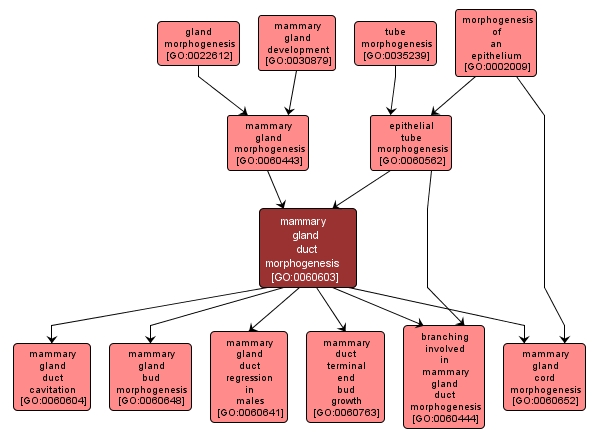GO TERM SUMMARY
|
| Name: |
mammary gland duct morphogenesis |
| Acc: |
GO:0060603 |
| Aspect: |
Biological Process |
| Desc: |
The process by which anatomical structures of the mammary ducts are generated and organized. Mammary ducts are epithelial tubes that transport milk. |
|

|
INTERACTIVE GO GRAPH
|














